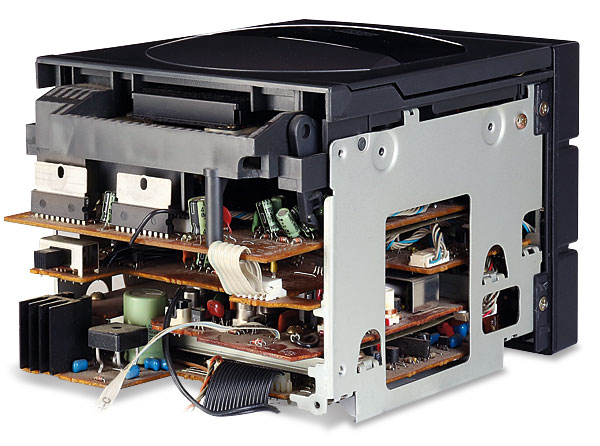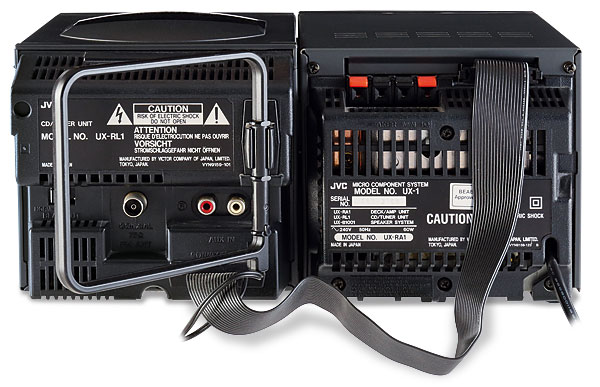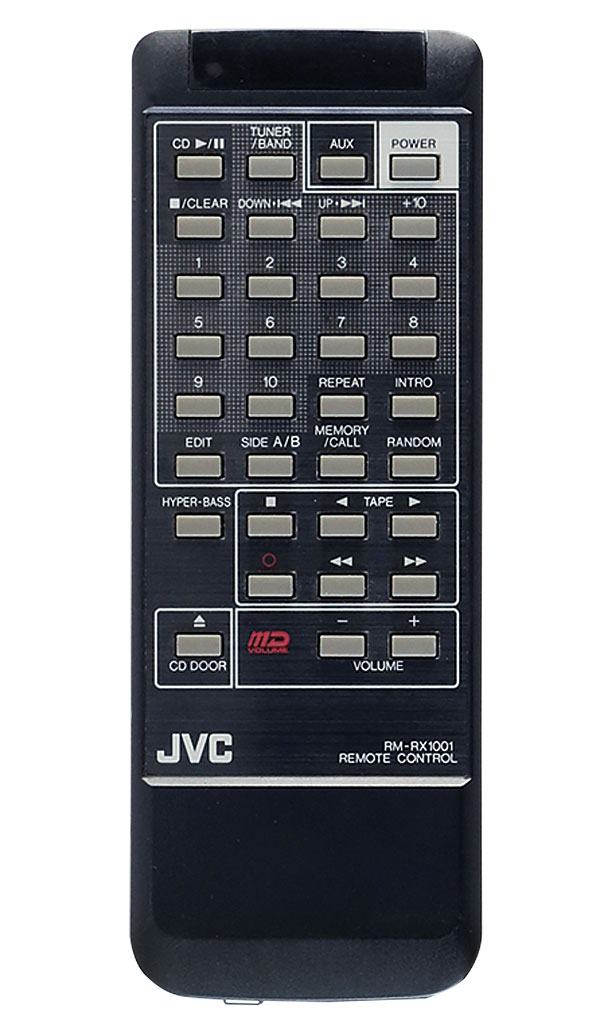JVC UX-1 micro system Page 2
![]() Tim Listens
Tim Listens
Auditioned as a whole I found that all three sources gave a broadly similar sound. I've heard better CD players and much worse cassette decks (this one is unusually good), while the tuner seemed able to pick up noise-free stereo reception on FM with nothing more than a short length of wire poked into the aerial socket.

It is the overall sound of this tiny combination that intrigues the most as it gets right down to the roots of what I think vintage hi-fi is all about. Obviously, small ported cabinets and cone tweeters are never going to produce state-of-the-art performance and the speakers are by far this system's weakest link, but the sound they deliver has an authentic quality that makes them worth persisting with. Overall, the UX-1 package has a dry and well controlled presentation that's slightly sucked out in the midband and a little papery and soft at the top. Switching in the bass boost adds a bouncy, chewy bottom end to the proceedings, which integrates surprisingly well, the operating points of the circuit seemingly being well chosen and carefully matched to the loudspeakers.
Serious listeners may turn their noses up at this, but this sound was as much a part of the early '90s music scene as glow sticks and outdoor raves. In short, it takes you back there, which is something only the best and most appealing vintage hi-fi does.
Compared to a full-sized system carefully setup in a well planned room, the UX-1 sounds obviously deficient in terms of clarity, focus and scale. However, when used at close quarters in a smaller space it makes a lot of sense. If you want to turn a box-room into an imaginary concert hall then this is a great way to do it. I was impressed by the way REM's 'Nightswimming' [Automatic For The People; WB 9362-45055-2] retained much of its dark and melancholic atmosphere when played through the JVC ensemble. Small units and portables can often play the basics of a tune but fail to communicate the emotion behind it, but the UX-1 is well above this level.

String Theory
It was a combination of bass warmth (the next best thing to true extension, something which isn't really practical with a unit of this size) and a reasonable ability to convey upper midrange textures which I think made the difference. In particular, the string section on the REM track sounded surprisingly convincing as a result, although I've heard other systems portray the woodwind sections with a better sense of creamy richness. Those who know the album will recognise this as one of the later tracks; I found that the little JVC UX-1 is one of those fatigue-free systems on which one starts listening to the beginning of an album and ends up enjoying the entire set, even if that was not the original intention.
Up All Night
The tuner was an addictive listen too. Even with a basic antenna, BBC Radio 3 (90.3MHz) provided clean stereo reception with a good sense of depth and space and I made a regular appointment with the Night Tracks programme while auditioning the UX-1. Careful positioning of the loudspeakers made it almost possible to replicate the immersive experience this broadcast's eclectic choice of material can generate when heard through full-sized equipment.

Is the JVC UX-1 a giant killer in the same way that the Aurex Micro System 15 was in its time? No, it doesn't come anywhere close, but I suspect that it was never intended to. It is a match for the bulk of modern alternatives though, whether they be speaker docks or other single-piece systems. It's perhaps more useful too given that it is able to play a wider variety of formats, isn't tied to a smartphone or a subscription service and can record. What's more, it's also an important part of audio history in that it can lay claim to having been widely imitated.
Buying Secondhand
There are still plenty of UX-1s in circulation and none are particularly expensive, so buy only the best. The most fragile part is the power output IC. This can be damaged if a whisker of wire shorts out the speaker terminals. Other common failures are the bulb behind the LCD panel and the belt for the CD door, neither of which are difficult to sort out.

As the CD player will have done the lion's share of the work be on the lookout for worn optical blocks. The JVC 'Optima' laser used is available as a pattern part but these vary in quality – you may need to try several before finding one that is satisfactory.
The cassette section is durable – unlike some it doesn't rely on the capstan motor and belt to shift the mechanism since it has its own motor and geared drive. Poor speed stability points to a worn belt or pinch rollers, but working in the tiny mechanism is not for beginners.
Hi-Fi News Verdict
Not only is the JVC UX-1 a serious design laid out to proper audio engineering principles but few really small systems are as versatile or as capable. True, it's probably more of a collector's piece for audio historians than a unit you'd buy for sound quality reasons alone, but it does pretty well all the same. Is it hi-fi? Just. Is it fun? Undoubtedly. Oh, and buy one with the speakers, even if you do not intend to use them.


























































